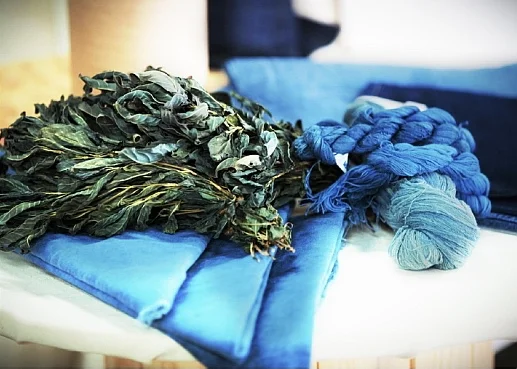Magenta-colored wastewater spills into a river in China / Photo: RiverBlue.
“You can tell the 'it' color of the season by looking at the color of the rivers," said Orsola de Castrocan. In the opening scene of the award-winning documentary RiverBlue, the fashion designer and activist explains how this is a standing joke in China, where it is estimated that 70 per cent of the rivers and lakes are contaminated by the 2.5 billion gallons of wastewater produced by the textile industry. But for the local communities that live alongside these rivers, those who work in the industry, and for the environment, this is far from funny, and following increasingly widespread reports of rivers with unnatural hues, the Chinese government has begun a crackdown on the polluters.
Whereas in the past, environmental authorities could only issue fines, new rules governing pollution emission permits have been published by China’s cabinet, the State Council, which authorize the environmental protection ministry and its local branches to immediately close polluting factories. In an interview for Chemical & Engineering News, Dalton Cheng of Hong Kong-based Intech Digital explained that this has resulted in as much as 60% of China’s denim-dyeing chemical capacity being shuttered, which is equal to roughly 30% of global capacity. And Cheng’s firm is among a growing list of companies that are now trying to fill this void, by tackling dyeing’s wasteful water and energy practices, as well as its reliance on toxic chemicals, through specializing in new, more sustainable fabric-coloring technologies.
High-resolution color patterns can be printed directly onto cotton using pigment inks rather than dyes to reduce the use of water and chemicals / Photo: Intech Digital.
The vast majority of water used for textile dyeing actually comes after the dyeing process, when fabrics, particularly cotton, have to be washed over and over again to remove unfixed dye. At companies such as Intech Digital, which specialize in digital printing, large-scale printers take the place of dyeing vats and work with textile inks. Printing on textiles with pigments rather than dyes uses very little water, and produces much less waste than traditional methods, and the demand for the use of digital textile printing is growing rapidly.
Another water-saving innovation has been developed by Huntsman, a global provider of dyes and chemicals for the textile industry, which has created a line of dyes for cotton called Avitera. According to the company, these dyes require one-quarter to one-third less water and also use one-third less energy than traditional dyes, due to the fact that the dyeing process lasts about four hours compared with the seven hours required for conventional dyes. Avitera dyes have also been formulated to be free from p-chloroaniline (PCA), a hazardous chemical used as an intermediate in the manufacture of dyes and pigments.
Stony Creek Colors has contracted with local farmers to grow natural indigo.
And it’s not just major suppliers that are working to tackle the fashion industry’s waste and pollution problems, but smaller chemical and biotech start-ups too. ColorZen, a North Carolina-based start-up, has developed a cotton pre-treatment which makes the dyeing process faster while using 90% less water, 75% less energy, and 90% fewer auxiliary chemicals. It also cuts out almost half the dye compared with processes that call for salts. And Stony Creek Colors, a family business run out of Tennessee, is developing varieties of leguminous indigo plants for dye production as an alternative to the chemically created synthetic version, a business model that is also providing a high-yield, high-profit crop for local farmers looking for an alternative to tobacco.
Other start-ups looking to nature for a solution are UK-based Colorifix and the French firm Pili. Both companies use microbes to reduce the use of chemicals in textile dyes, engineering them to produce natural colors, and which produce water savings of 90% and an energy savings of 20% over standard processes.
While these new textile dyeing methods are to be welcomed, China’s crack down on polluters coupled with increasing local wages is seeing the industry move to other countries, including Bangladesh and Vietnam, where fewer environmental controls are in place. So the need to continue to raise awareness, educate and legislate remains, as well as maintaining the momentum surrounding innovation.
Related Reading:
Fast Fashion's Green Thinking
New Fashion Wastewater Solution Unveiled At UN Summit




